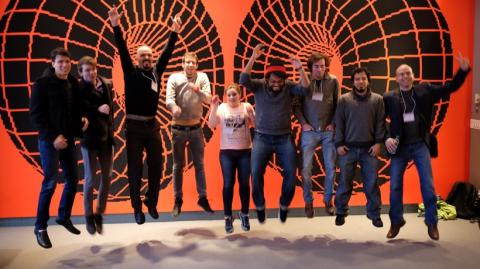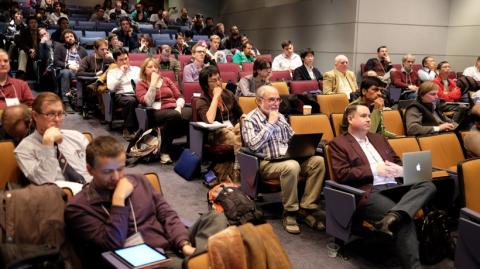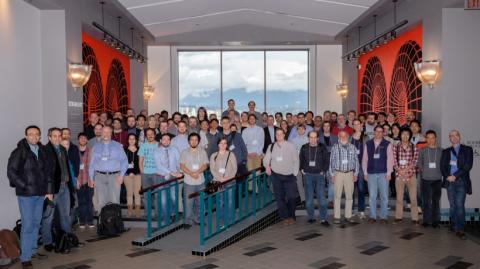


“Gravity is the most basic of all forces, felt and sourced by everything in the universe,” said Levon Pogosian, a professor in SFU’s Department of Physics, who recently chaired a conference on the topic of testing gravity. Over the course of the three-day workshop, world-leading researchers considered new ways of testing gravity, especially in light of recent advances in technology. Testing Gravity 2015 attracted about 100 experimentalists, observers and theorists from across North America, Europe and Asia.
“Despite centuries of scientific inquiry, there is still a great deal of mystery surrounding gravity,” said Pogosian. “There are some theoretical ideas out there that try to resolve some of these issues and advancing technologies are opening opportunities for new ways of testing these ideas.”
To test these theories of gravity – quantum gravity, bigravity, string theory, and so on – one must go beyond blackboard equations and apple trees.
“You can test how gravity works over very large distances in space by observing the motion of stars and galaxies. You can search for gravity waves by building giant detectors on Earth. You can check if gravitational laws hold up on very short distances by building super sensitive experiments that can be performed on top of a table in a small room,” explained Pogosian.
The ALPHA collaboration at CERN is aiming to test if antimatter has the same gravity as matter. ALPHA-Canada team researcher Makoto Fujiwara explained, “The gravitational force on antimatter has never been measured directly. While Einstein’s theory of gravity predicts that matter and antimatter should behave the same way, no one has ever seen antimatter ‘fall down’.” At the workshop, Fujiwara discussed a proposal by the ALPHA collaboration for such a study.
For researcher Ruediger Picker, the workshop was relevant to his work with ultra-cold neutrons (UCN). “Neutrons are ideal to perform laboratory tests of gravity, because of, as the name says, their electrical neutrality. Ultra-cold neutrons are especially interesting since their energy levels are comparable to the ground state energy levels of neutrons in the gravitational field.”
Picker added, “It was interesting to learn how the different experimental or observational tests at vastly different scales have to be combined to scrutinize general relativity as well as modified gravity theories: from neutrons of femto meter size over micro spheres of micro meter to the moon orbit (385 000 km), binary pulsars (orbital dimension of a few solar radii) to large scale structures (10^24 m).”
The workshop encouraged a strong network of expertise. “At our upcoming UCN facility, gravity tests will be possible and we hope to attract experimenters to do them at TRIUMF,” said Picker.
Leading experts, including former TRIUMF student Michael Landry (Caltech), offered introductory lectures for interested students and postdocs during a one-day school preceding the workshop.
The workshop was co-sponsored by SFU, Perimeter Institute, Canadian Institute of Theoretical Astrophysics, Institute of Particle Physics, and TRIUMF. TRIUMF’s Makoto Fujiwara and Ruediger Picker were also part of the scientific organization committee for the workshop.
Visit Testing Gravity 2015 for more information.
-Melissa Baluk, Communications Coordinator
